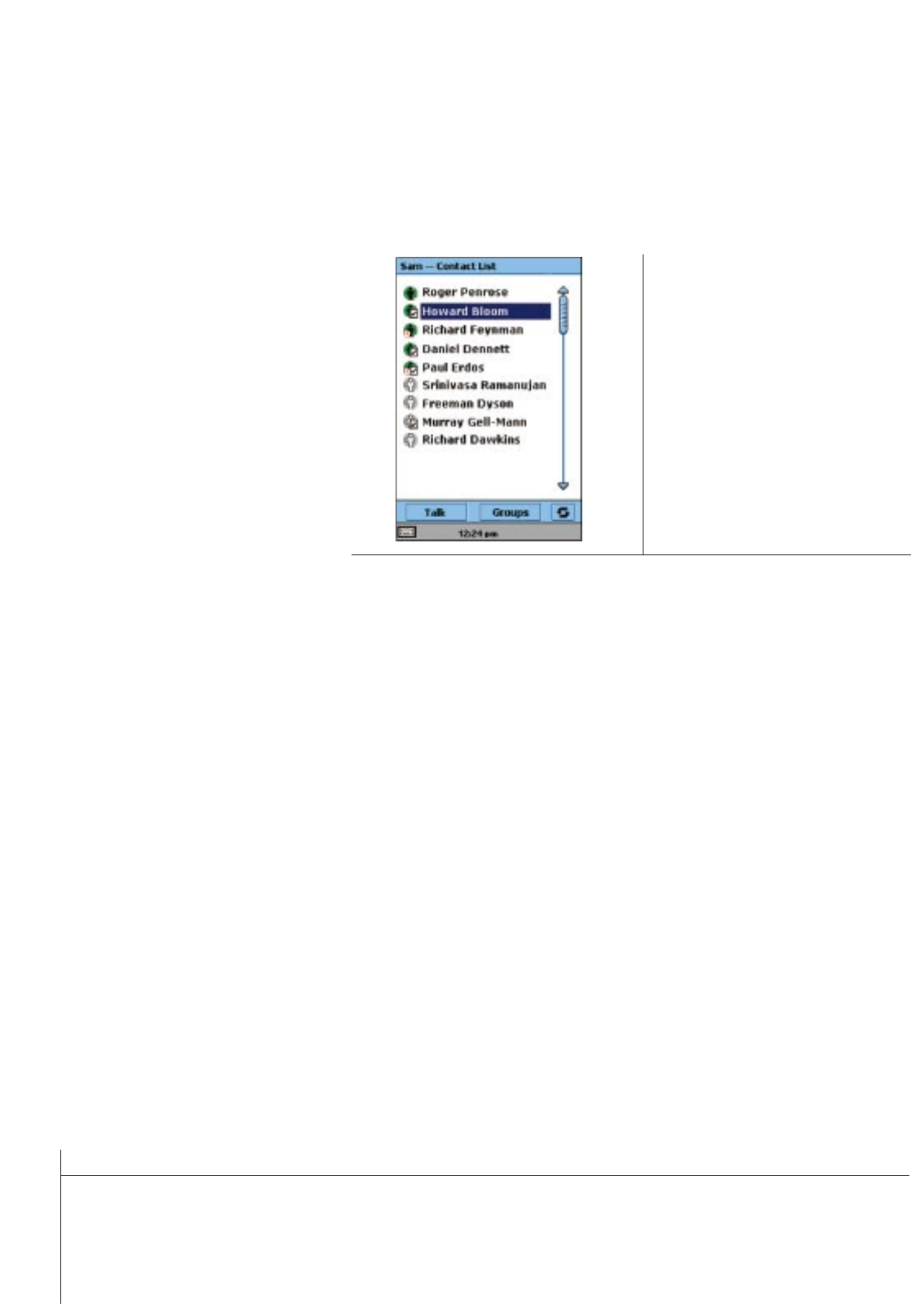
Ericsson Review No. 1, 2004
19
frame-bundling feature is supported in the
AMR and EVRC payload format. Built-in
functionality in the MRF makes it possible
to order clients to change the number of
frames in an RTP packet to adapt to current
network conditions. The MRF employs the
RTP control protocol (RTCP) to monitor
the network.
Standardization
The Ericsson Instant Talk solution is based
on the PoC industry standard, initially de-
veloped by an industry consortium made
up of Ericsson, Motorola, Nokia, and
Siemens mobile, and supported by AT&T
Wireless Services, Cingular, Sonim Tech-
nologies, and Sony Ericsson. It is an open,
published and demonstrated interoperable
multi-vendor specification. PoC Phase I in-
cludes detailed specifications that mandate
the requirements and architecture of the
solution. In additon to the Stage 1 and 2
specifications, the consortium also devel-
oped a complete Stage 3 suite of PoC spec-
ifications that stipulate signaling flows,
user-plane flows (including talk burst con-
trol mechanisms), and group and list man-
agement methods. One of the specifica-
tions applies specifically to the radio access
network, describing the recommended
QoS attributes of the radio link and the op-
eration of the voice codec. To avoid mar-
ket segmentation, Ericsson has striven for
an open standard that avoids lock-in and
creates interoperability between operators
and between terminals from different ven-
dors.
Ericsson and the other members of the
consortium have submitted the Phase 1
specification to OMA. The OMA process is
moving forward, and the PoC Phase 1 spec-
ification has formed a basis for the OMA
PoC standard. Further development will in-
clude new features in the PoC specifications,
such as a standardized presence solution
(Figure 3), an enhanced authentication
method, and a network-to-network inter-
face to enable charging between operators
and to make the PoC solution compatible
with additional radio access networks
(WCDMA and CDMA2000). As the OMA
PoC standard evolves, the Ericsson Instant
talk product will be updated.
Conclusion
Ericsson Instant Talk is the first of many IP-
based applications that will be available over
IPMM, which is based on the 3GPP IMS
standard. The applications running on
IPMM are controlled using SIP and
SigComp (to make SIP efficient in mobile
communications).
Instant Talk consists of three parts: the
IPMM system, which can be reused in fu-
ture applications, the Instant Talk Applica-
tion Server, and the handset client. Instant
Talk is fully compliant with PoC specifica-
tions, which ensures interoperability and fa-
cilitates rapid uptake of service.
1 Heino Hameleers and Christer Johansson,
“IP Technology in WCDMA/GSM core net-
works," Ericsson Review, Vol. 79(2002):1,
14-27, 2002.
2 Peter Granström, Sean Olson and Marc
Peck, "The future of communication using
SIP," Ericsson Review, Vol. 79(2002):1, 28-
35, 2002.
3 Gonzalo Camarillo, “SIP demystified,”
McGraw-Hill, 2002
4 Mats Nordberg, Hans Hannu, Jan Christof-
fersson and Lajos Zaccomer, "Improving
SigComp performance through extended
operations," Proceedings of VTC Fall 2003,
Vehicular Technology Conference, Orlando,
October 2003.
5 Jan Christoffersson, Hans Hannu, Stefan
Forsgren, Stefan Wänstedt and Krister
Svanbro, "Reducing call setup delays using
SIP/SDP compression," Proceedings of RVK
02 - Radiovetenskap och Kommunikation
02, Stockholm, June 2002.
REFERENCES
Figure 3
Mobile presence makes everyday
communication easier.






